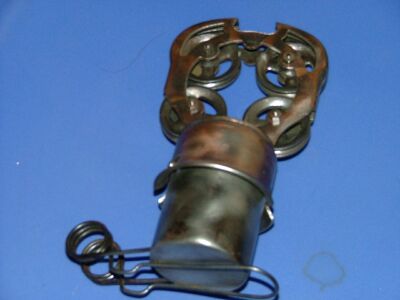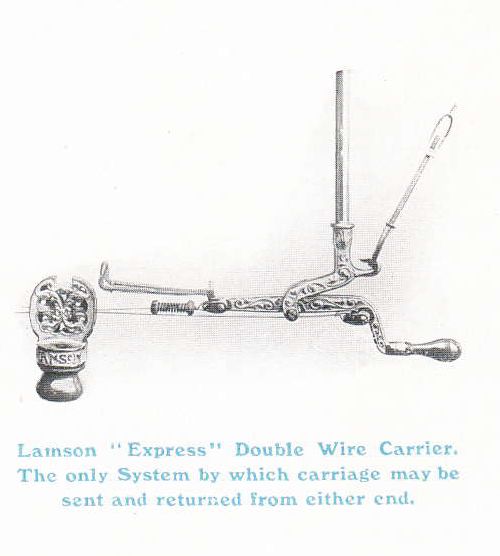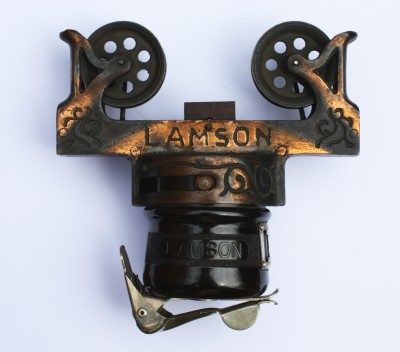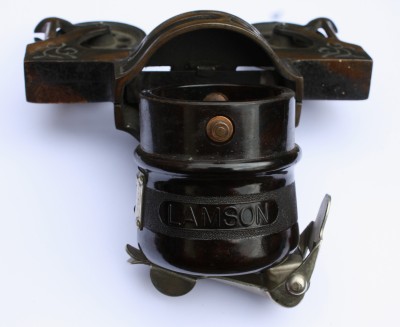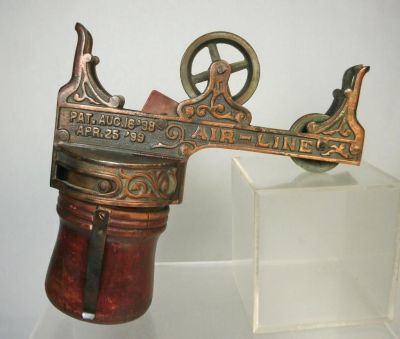THE CASH RAILWAY WEBSITE |
||||||||
| Home | Manufacturers | Cash Balls | Wire systems | Cable systems | Pneumatic systems | Locations | References | Patents |
Wire system cars
Rapid Wire system
The photographs below are of a Rapid Wire type of car. Note the V-shaped notches for engaging with the catapult in the propulsion. This car has the ornamental version of the LAMSON name and decorative work by each wheel. It has lost its clip for notes on the bottom of the cup. (Photographs courtesy of Hans Mai). Rapid cups always seem to have been wooden with several ridges. They connected onto the metal chassis with a bayonet fitting. A brochure of around 1912 gives the dimensions of the cup as 1 7/8 inches wide and 2 3/8 inches deep inside. Unless otherwise stipulated, all carriers were finished in gun metal, though nickel, bright brass or copper bronze could be requested.
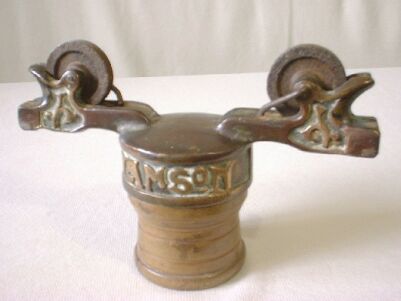 |
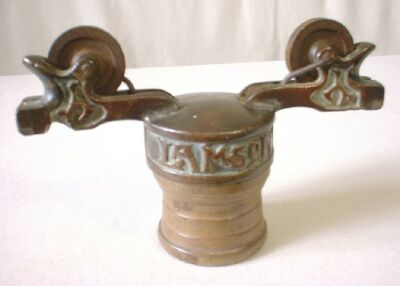 |
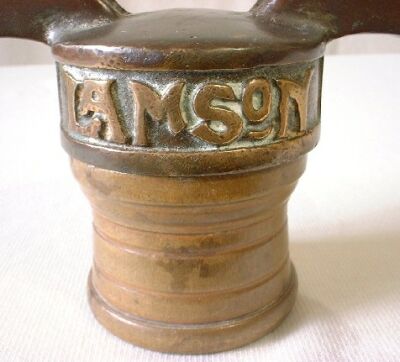 |
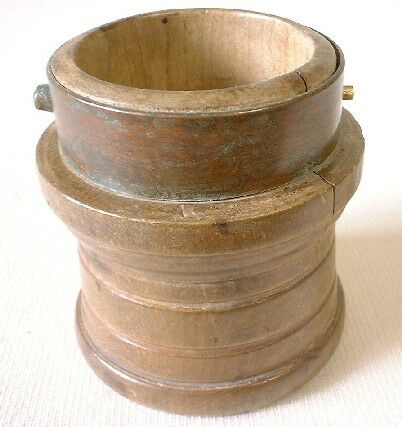 |
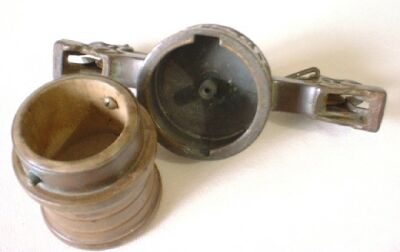 |
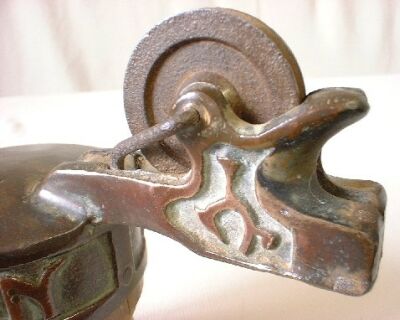 |
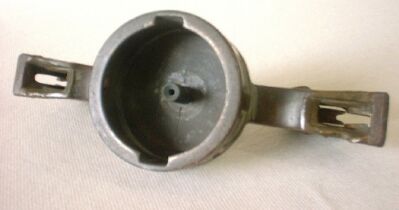 |
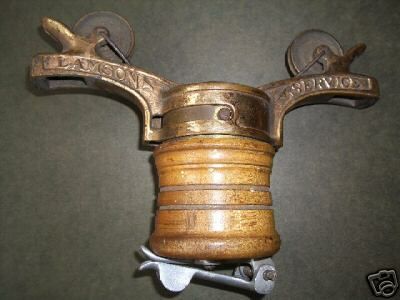 |
A car advertised on eBay with curved brackets and the name "Lamson Service". There is a car exactly like this in the brochure of 190-. |
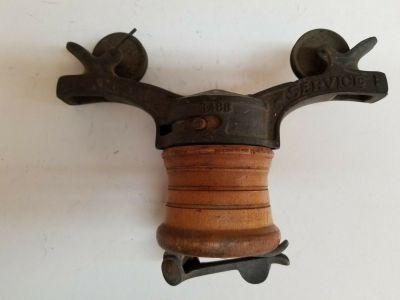 |
A similar car also advertised on eBay. It bears the number R.488 in the centre of the casting. |
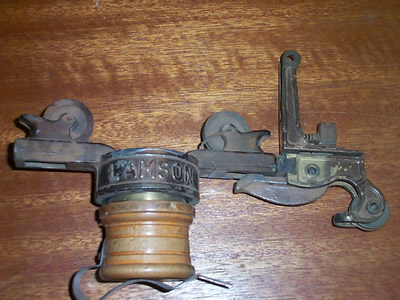 |
A less ornamental version of the Rapid Wire car with straight brackets and plain "LAMSON" lettering. The rectangular holes underneath can be seen that engage with the slider in the propulsion. (Former Iverach shop, Coolamon) |
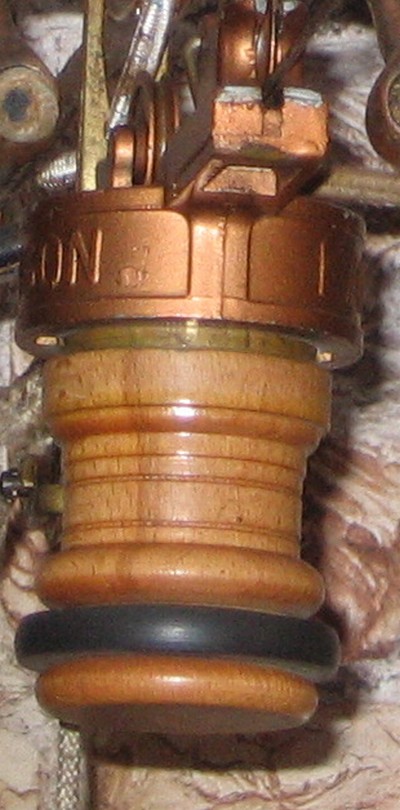 |
A late and probably unused car from Dartford Museum, now at Seaford Museum. The rubber ring is presumably to protect the carrier or objects that it might hit. |
Gipe (later Lamson Ariel) system
The Gipe system used two wires, which were pulled apart behind the car in order to propel it. There were four pulleys, two sitting on the upper wire and two engaging with the lower wire.
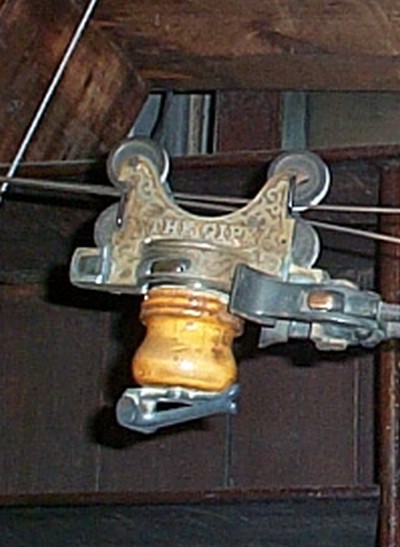 |
Gipe car at Grouts, Palmers Green |
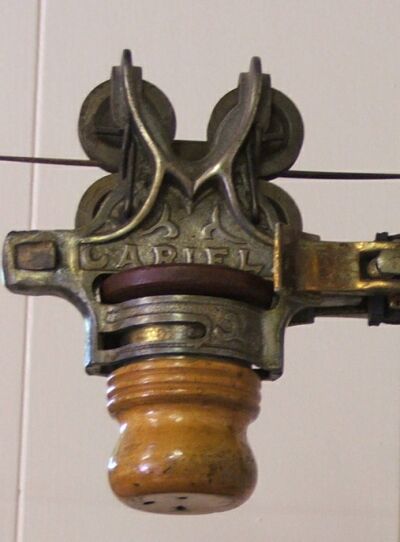 |
Ariel curve car from Crich Tramway museum. Note the rubber ring for restraint when negotiating the curve and the similar-shaped cup to the one above.. |
Barr/Lamson Express system
This car was offered for sale on eBay. It is from a Barr system (a 2-wire system like the Gipe system). Unlike Lamson and Gipe cars, it is completely made out of metal. The build quality does not look up to Lamson's. There is an illustration of something similar in the (British) Lamson brochure of ca 1910 opposite, showing the "Express system" and may be after Lamsons took over Barr.
|
|
Air-Line system
Note the flat sides by the wheels for engaging the cord in the propulsion.
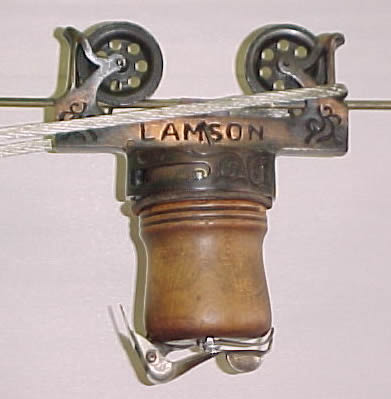
A car with "LAMSON" on the chassis and wheels with round holes. |
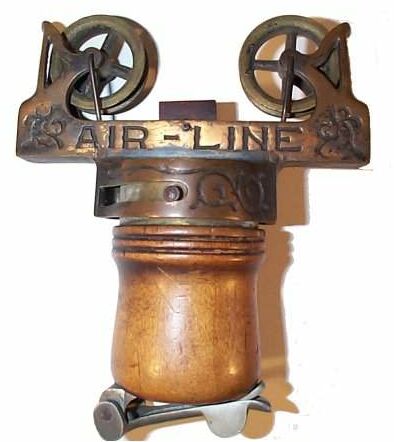
This car is similar in design and decoration but has spoked wheels and "AIR-LINE" on the chassis. |
Another car of similar design but with a bakelite cup. Bakelite was invented in 1909 but I don't know when it was first used by Lamsons. © Robin Adcroft |
The same car with the cup hinged back. © Robin Adcroft |
A more modern-looking car with bakelite cup. ©Todd Hall
|
A very unusual car offered on eBay like the illustration in US Patent 660099 awarded to E.C. Gipe on 23 October 1910. The patent was for "a simple and effectual means of stopping the carrier at the end of the way" with a "yielding or elastic brake or friction wheel". |
